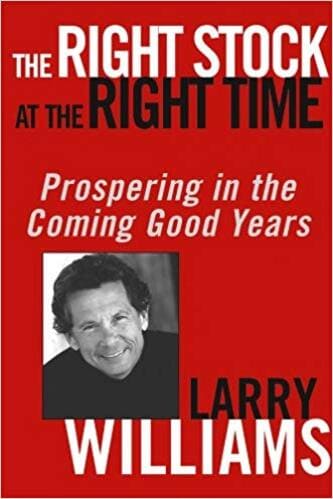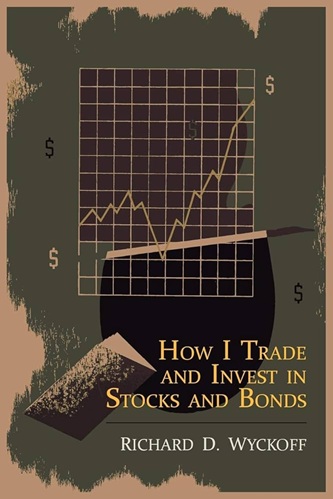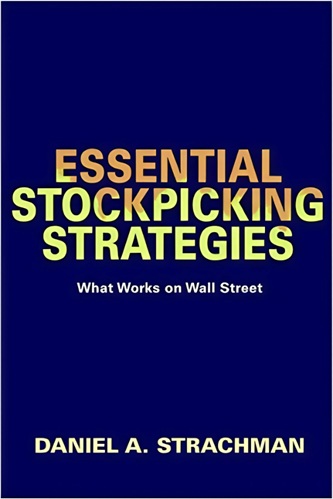The Right Stock at the Right Time: Prospering in the Coming Good Years
$16.12
| Author(s) | |
|---|---|
| Pages |
235 |
| Format |
|
| Publication Year |
2003 |
The Right Stock at the Right Time: Prospering in the Coming Good Years delivers a knock-out punch to investor pessimism, with an uppercut of bullishness and hard facts.
Author’s Introduction:
In this book I will go into detail explaining what I think will be the best buy points over the next 10 years. That’s quite a claim. Can it be done, and if so how? I’d like to first catch your attention with this: If one were to look for the best buying points of the twentieth century one could not help but notice that these stellar opportunities came in 1903, 1912, 1913, and 1920 into 1923. The ultimate best buy point came in 1932. This was followed by wonderful buy points in 1942, 1952, and 1962; 1972 wasn’t bad (though 1973 was better), and, of course, 1982 was perhaps the second best buy point of the twentieth century. That was followed by another superb buy point in 1992. Notice that for the past 100 years, these ideal buying points came in years ending with a two or a three.
If you had invested in just these years you would have substantially outperformed the investor who chose to continually buy stocks. I find this rather amazing and, better yet, to be hard evidence that indeed there’s something going on in the U.S. stock market—something that shows us when the best buying opportunities tend to occur. They are usually to be found in the first part of the decade—namely, years ending in twos and threes.
Contents:
- The 10-Year Pattern in the United States Stock Market
- The Four-Year Phenomenon
- The Amazing October Effect
- How to Know for Sure the Bottom Is Here
- The Next Move Up: Why It Will Be So Spectacular
- The Purpose of Investing
- How to Supercharge Your Investment Return
- The Old Economy Is the New Economy
- Measuring Investor Sentiment for Individual Stocks
- The Investment Challenge You Face
- Putting It All Together for Long-Term Investment Success
- Money Management: The Keys to the Kingdom
- Final Thoughts: Nonrandom Thoughts on a Random Market
The Right Stock at the Right Time: Prospering in the Coming Good Years By Larry R. Williams pdf
21 reviews for The Right Stock at the Right Time: Prospering in the Coming Good Years
Clear filtersOnly logged in customers who have purchased this product may leave a review.










Jasiah Ramos (verified owner) –
Pragmatic approach based on samples and out of samples observations this Is a must read for stocks traders
Ricardo Walker (verified owner) –
The information in this book is not useful for making money in the stock market. If you are interested in value investing read The Intelligent Investor by Ben Graham, The Essays of Warren Buffett, and most anything written by Peter Lynch. If you are interested in more short term oriented strategies you need first to set up a good trading system. I would suggest Trading the Plan by Robert Deel. Unless you understand money management you will lose money. Period.
Mercy French (verified owner) –
Like Larry’s every books.
It’s amazing and fabulous!
As a stock trader,YOU HAVE TO READ IT!!!
Boden Clayton (verified owner) –
Good research into the stock market, presented in a clear and positive manner. Best of all it works I bought in early 2003 and have a handsome profit on all my stocks.
Milani Castaneda (verified owner) –
Easily this book paid for its self in the first couple chapters. If I knew before I bought it how enlightening it would be, I would have been willing to pay much more than the retail price.
Sofia Murray (verified owner) –
There are a number of good books on “Market Timing” and this would be in the top five. If you could afford to read three books on market timing, I would get Les Masonson’s book, Deborah Weir’s, and this one. If you want to first learn about market timing one a book at a time, get them in the same order I just listed them.
Each book covers some of the same ground but each offers a few nuggets that aren’t as well covered in the other two. Larry William’s book has the better documentation on the “Decade Effect”, an interesting correlation between each year in a decade and how the market has done in each of those ten years.
So, all in all, buy those three books and you will have a pretty complete understanding of timing the market on a macro-basis.
Jade Leonard (verified owner) –
This is a great book. Although I am not a student of stocks, I enjoyed Mr.Williams’s straightforward approach to stock investing. I first came across Larry William 9 or 10 years ago, early on in my career as a commodities broker. Back then his style of writing was clean and uncomplicated. His premises were easy to follow and decipher.
This time around he has done the same thing with stocks. I am the author of three books on trading futures and I have to admit I wish that I could come across as plainly as Mr. Williams has. Any investor would only benefit from this great book.
Hazel Villarreal (verified owner) –
This book delivers on its promise…Williams gives clear and concise rules of market timing, tells why he bought at the 2002 lows and lays out when he thinks the next major bottoms will come.
I loved his ideas on what stocks to buy…lots of research here
that presents a convincing case of what values and ratios are found in stocks that go up, not down. The book also references great free resources to update his ideas on all my stocks.
All this is salted with some words of wisdom on trading and investing that sure makes sense to me.
Brendan Long (verified owner) –
There are many investment guides available but only some are of note. This is one of them. Mr. Williams distills the craft of market timed investing for use by the lay person. Warren Buffet once said “Anyone came buy a stock that’s going ot go up. That’s no secret. The secret is knowing when to sell.” From personnal experience I know this to be true. This book is the first practical guide that I have seen that helps with figuring out when to sell without having to use complicated formulas and other difficult methods. And, it also helps with the buying aspect also. If you get one stock investing book this year, let it be this one. I do believe you’ll like it.
Nikolai Brooks (verified owner) –
I am sorry that I had read this book late, but hopefully it is not too late. In short, this is a book about very long term market timing through 100+ years of “statistical or historical analysis” plus some “trading philosophy”. The essence of it came in the first 40 pages (or 3 chapters out of 13), which can be summarized as:-
1. Optimal buy points come in years ending in twos and threes, followed by the incredibly strong five years, then in the fall of any year ending in seven. Most major highs have come in years ending in nine and zero.
2. Every four years we expect a market bottom. Incidentally one should be looking for significant market bottoms in 2006, 2010, 2014….
3. March buys in years ending in eights and September exits in years ending in nines gave spectacular results.
4. The Oct buy April sell % gain is significantly higher than the April buy Oct sell % gain.
5. Combining all the above, we should have a significant market rally in 2005 and another in 2006.
Up to this very day on Feb 2004 which is over nine months after it’s publication, what the author said was by and large correct. There is no reason not to recommend this book to anybody who got the patience and the courage to place a high probability bet.
p.s. With respect to the trading philosophy part, I would like to quote something from the book for your reference. Hope you like them.
1. October. This is one of the peculiarly dangerous months to speculate in stocks. The others are July, January, September, April, November, May, March, June, December, August and February. Mark Twain.
2. Markets dont top because sellers come into the marketplace. Markets top because there are simply no more buyers. Tom De Mark
3. The opposite of any generally accepted idea is worth a fortune to somebody. Francis Scott Fitzgerald Key
Desmond Pennington (verified owner) –
We all get different things from a book depending on our personality, experience, investment style, etc. I look for the positive things I can get from a book, not for things to critize.
I have over 300 books in my Investment Library,and this is one of the few I set aside as a reference.
I always read Larry’s books. He is not just an academic, a writer, or a peddler of his products. Larry Williams is one of the premier investors of our time. You can count the people more successful at investing on a few fingers. Anytime a person like this writes, I want to read it. Is the book perfect? Of course not. I too wish there were more detail and clarity. I count my- self lucky if I get one good idea from a book, I got several from this one. I have investment books that I have paid well over a hundred dollars for. I paid less than twenty dollars for this book. I can’t imangine why anyone would hesitate to purchase a inexpensive book like this from an author with Larry’s credentials. I am not the least concerned if he includes a few commercials.
Ashton Mosley (verified owner) –
Larry Williams is a prolific author, trader, educator, and money manager. With over a quarter century of experience, Williams has provided investors with practical and easy-to-implement market timing and stock selection strategies in this just published book.
Williams initially focuses on the recurrent seasonal patterns in the market. Williams reveals one interesting strategy where he notes that excellent times to go long the market are years ending in twos (e.g., 1952, 1962 …… 1992) and threes. Just look at charts in those years or view them in this book to see those excellent buying points.
Williams also covers the best years of each decade to invest – fifth, eighth and ninth years. The consistency of these three years performance is 80%(positive returns in 8 out of 10 of those decade years). Next he covers the four-year cycle from 1858 to the present time (last 4-yr cycle years were 1994, 1998, 2002) showing that they were good times to buy at their yearly lows, many times occurring in the September/October timeframe.
Another strategy Williams covers in buying in October and selling in April. This strategy was offered by Stock Trader’s Almanac in 1986 developed by Yale Hirsch, and it still works today. This strategy has produced significant returns while reducing risk as investors are out of the market for half the year.
Williams provides a look at indicators to determine that a market bottom is in place. He covers such items as the Fed’s Stock Evaluation Model, margin credit, odd-lot short sales, Investors Intelligence Bull/Bear Index, US Bonds, and gold prices.
Williams covers in detail the fallacy of long-term investing and the devastation that it can wreak on investors portfolios. Investors who are die-hard “buy-and-holders” should read this chapter to learn that to use that strategy is dangerous.
To do well in the market, Williams urges investors to find stocks that have the capability to outperform the market, and then find the best time to buy them. He totally disagrees with the Wall Street cognoscenti that market-timing is useless.
He spends a chapter on buying stocks at a discount, and one on measuring investor sentiment on individual stocks. He lists seven traditional measures of value (e.g., P/E ratio, Price/Book) and elucidates on which ones work best.
All-in-all this well-written, easy to understand book provides investors with a systematic, time-tested approach to investing. Williams has again provided investors with another classic.
Anderson Sellers (verified owner) –
This book is an outstanding value for any investor or stock trader! I could not put it down once I started reading it. Quite simply this book could make you immensely wealthy if you studied and applied the mountains of street smarts, common sense research and wisdom contained in its pages. It breaks new ground by its unique approach to combining broad-based, macroeconomic price patterns and some traditional fundamental statistics for timing the stock market. Investors and stock traders are starting to become more keenly aware that the concept of timing indicators from the discipline of Technical Analysis coupled with key statistics from Fundamental Analysis can provide the basis for rational stock investing……..in Bull or Bear markets. This may be the first book to accomplish this critically important objective for the individual investor that wants to control his or her own financial destiny.
This book contains sound advice and stock investment timing techniques from one of the most successful, highly respected and well-known investors, stock/stock index traders and educators in the business. Larry’s techniques for stock selection and market timing are based on sound historical analyses and practical methods for buying and selling. I believe this material proves, once and for all, the fallacy of the “buy and hold” approach and willy-nilly diversification schemes pushed onto an unsuspecting public by the ill-informed, and sometimes unscrupulous, community of brokers and investment advisors. This book blows their cover! Markets can be timed using patterns and fundamental indicators………………..and the individual investor can do it for themselves.
Larry Williams proves that market timing can significantly improve your investment results. As an example, using just one of the techniques in this book, I did an independent, blind, unbiased five year simulation of a strategy adapted from the High Yield Investment Strategy (p. 185) using the five lowest-priced, highest-yield stocks in the Dow Industrials and Dow Utilities (this is not the Dogs of the Dow strategy). This strategy returned $6,560 for each $1000 invested from October 1998 to June 2003 (an average 46%+ return per annum). While that kind of return may not be possible in all time periods, it certainly provides a high degree of credibility for the results that this book claims can be achieved. Contrast this with the severe losses many people have suffered in the last three years using other investing approaches. Remember 1998/1999 were two highly volatile, bubble years and 2000 to the present is a secular Bear. The strategy worked extremely well in both types of markets. What impressed me most was that gains were pretty evenly spread throughout the five year period (only the year 2002 had a loss and that was only -7.4%). Actually, the gains from the three Bear market years were nearly the same as those from the two Bull years. This is a great testament to how robust Larry’s techniques are. The bottom line is this is how I will invest my money and retirement funds, and I would strongly suggest it would be the right thing for many other individual investors to do, as well.
If you are looking for a sound and safe way to invest, grow and protect your money in the stock market, this book is for you!
Murphy Jenkins (verified owner) –
I am sure Larry Williams had good intentions when he wrote this book and the basic research certainly indicated that there was something to a seasonal cyclical affect as far as specific years within a decade going back to the late 1880’s. With that said, while I am not a statistician I would assume that there is not enough data points (14 as of today for each year within a decade) to really provide a significant conclusion. Nevertheless, I went to the trouble of updating the stats through 2019 and I can tell you the system is breaking down. While it is true the 5th year of a decade has proven quite lucrative over the past 140 years with zero down years, the last two decades have been barely positive with 2005 and 2015 being up 5% and <1%. Williams also touts the end of a 7th year of a decade as good buy point for an upswing in the 8th year. Things looked great for nearly a century until 2008 when the bottom fell out and the S&P dropped -41% and another drop of -4% in 2018.
Avayah Benson (verified owner) –
VERY GOOD ANALYSIS OF WHY WE SHOULD DO WHAT HE RECOMMENDS. I LIKE THE WAY HE DEBUNKS THE ESTABLISHED MARKET MYTHS. I HAVE BENEFITED A LOT FROM HIS BOOKS.
Zaniyah Schmitt (verified owner) –
Very good
Saige McCormick (verified owner) –
Even though this was written in 2003, it still has a lot that is helpful and applicaple today. I like his approch to investing.
Peyton Hayden (verified owner) –
Mostly make sense.
Alice Hobbs (verified owner) –
The book offers very sofisticated stock selecting and buying system for long term investors combinig charts and fundamentals. One can easily backtest it on actual data and enter the market. Very interesting is also the author’s guide through mutual funds investing. One chapter of the book opens the problematics of money management highlighting that successful investing is not only selecting and buying stocks but also proper managing of business risk.
Charlotte Newman (verified owner) –
This was one of the first books on investment finance that I read and it definitely helped to shape my view of the markets. Larry Williams has done some amazing things over the years and anything he puts out is worth listening to.
Rylee Fitzgerald (verified owner) –
I read the book cover to cover without sitting it down. Then I went back and highlighted and took notes. When I reviewed my notes I marveled how simple Larry makes the process of market timing and investment management. I’ve followed Larry’s work for several years and was really looking forward to this book. It really lived up to my expectations. Real stuff that one can use immediately, and understand. I know Larry’s approach to speculation works and I would highly recommend this book.